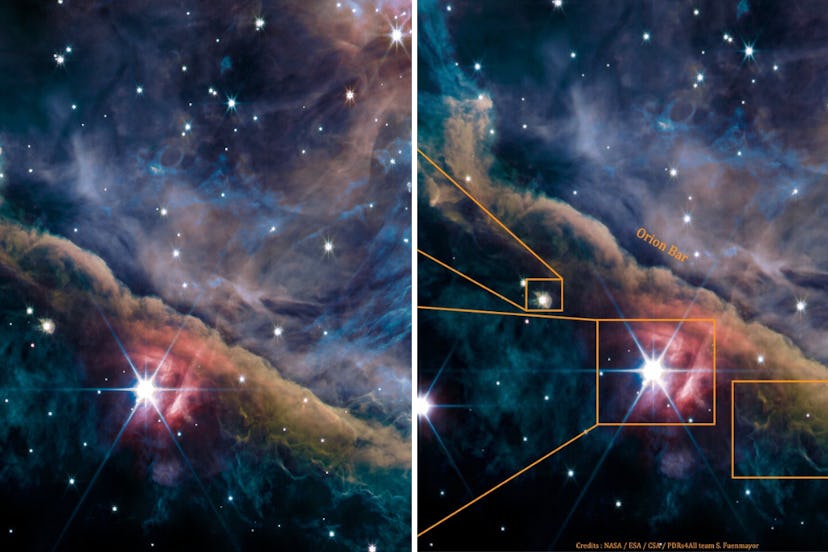The JWST Just Gazed Deeper Into The Orion Nebula Than Ever Before
It’s more than just a pretty picture.

The mind-blowing big telescope from NASA just continues to wow us. Just when we think the James Webb Space Telescope (JWST) has delivered its most stunning images from the world beyond our planet, we’re proven time and again that there is more to see, and we love it. This time we’re able to see the most detailed images ever of the star-forming region known as the Orion Nebula. Here’s what you need to know.
On September 12, a worldwide team of astronomers released new photos taken from JWST showing the Orion Nebula, which lies some 1,300 light-years away from Earth. According to the researchers, the new images are wow-worthy because there previously hasn’t been a way to see this area with the degree of detail that they were able to pull with the JWST.
"It's just the amazing detail, how sharp the images are, all this filamentary structure," Els Peeters, an astronomer and one of the principal investigators for the JWST observing program known as Photodissociation Regions for All (PDRs4AlI), told CBC News.
“We are blown away by the breathtaking images of the Orion Nebula. We started this project in 2017, so we have been waiting more than five years to get these data,” she added.
The images really are breathtaking and utilize several filters to get the composite image. And while scientists have been able to see the Orion Nebula region before, it has never been seen with this much detail, since the infrared on the telescope can see more than astronomers ever hoped.
“It shows a seemingly wind-swept region of blue gas, a bright star lighting up gas around it and, most prominently, an area of dense dust and gas, known as the Orion Bar,” CBC News explains.
For non-scientists, looking at the images is magical and very otherworldly. And although they are, for astronomers who have been studying this area for years, the new images are more than just pretty. These images hold a lot of potential clues to our world and may be another step forward in understanding how planets and life are formed.
“These new observations allow us to better understand how massive stars transform the gas and dust cloud where they’re born,” Peeters said in an interview with Universe Today.
“Massive young stars emit large quantities of ultraviolet radiation directly into the native cloud that still surrounds them, and this changes the physical shape of the cloud as well as its chemical makeup,” she added. “How precisely this works, and how it affects further star and planet formation is not yet well known.”
What’s next for this research team? The astronomers plan to continue to analyze the data coming back from the JWST and learn more about the formation of stellar systems. And more beautiful pictures are sure to come.